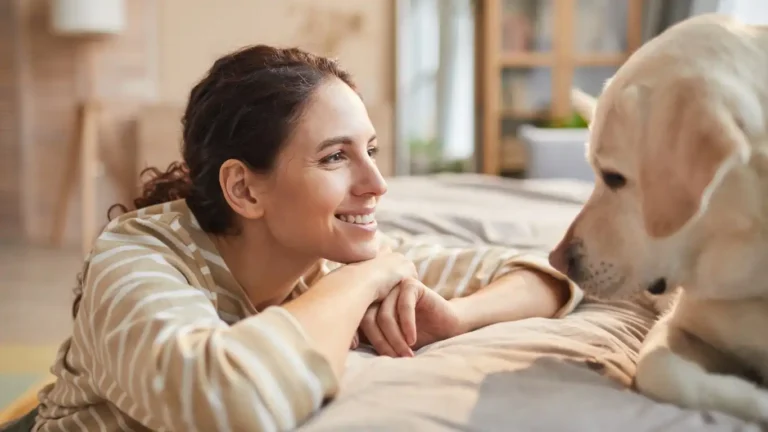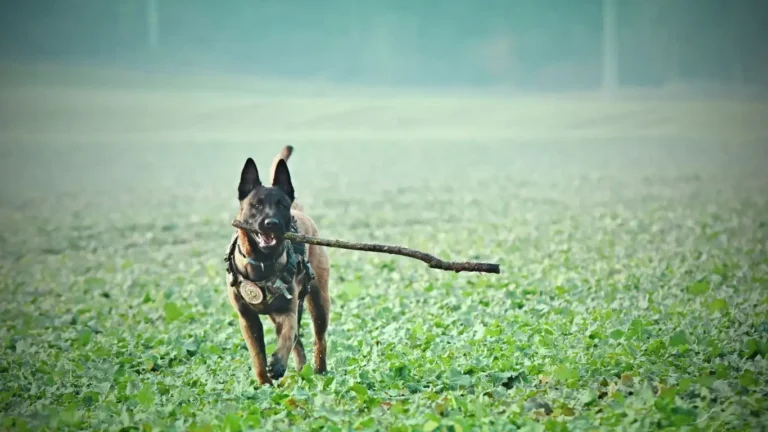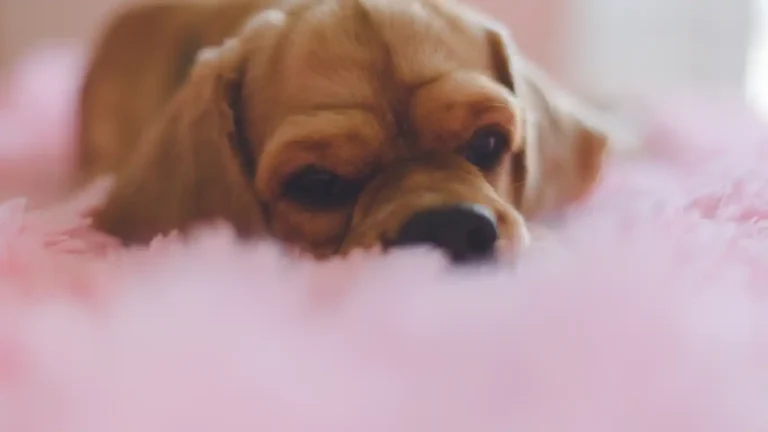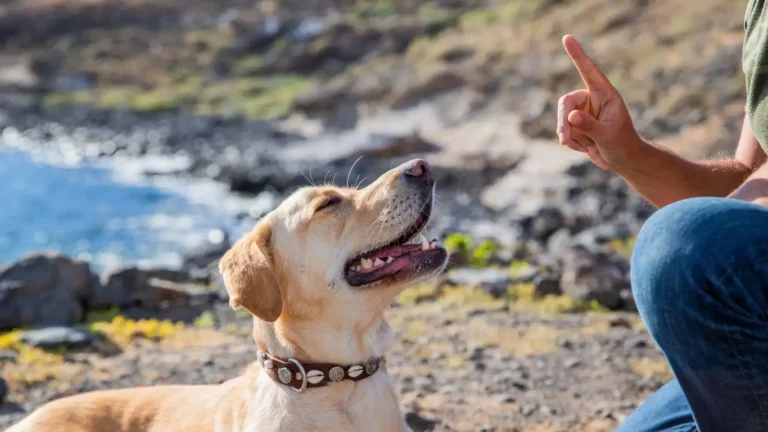How to Train a Dog to Be Comfortable Around Babies: Expert Tips for Success
As a Certified Professional Dog Trainer (CPDT-KA), I’ve had the privilege of working with countless dogs and their families. One common concern that comes up time and time again is how to train a dog to be comfortable around babies. This is a major priority for many pet owners, especially those expecting a baby or welcoming one into their home. Understanding how to build a peaceful relationship between your dog and a newborn is not only important for your baby’s safety but also for your dog’s well-being. After all, dogs are incredibly intuitive creatures, and making sure they feel at ease during such a significant life change can make a world of difference.
Understanding the Dog’s Perspective
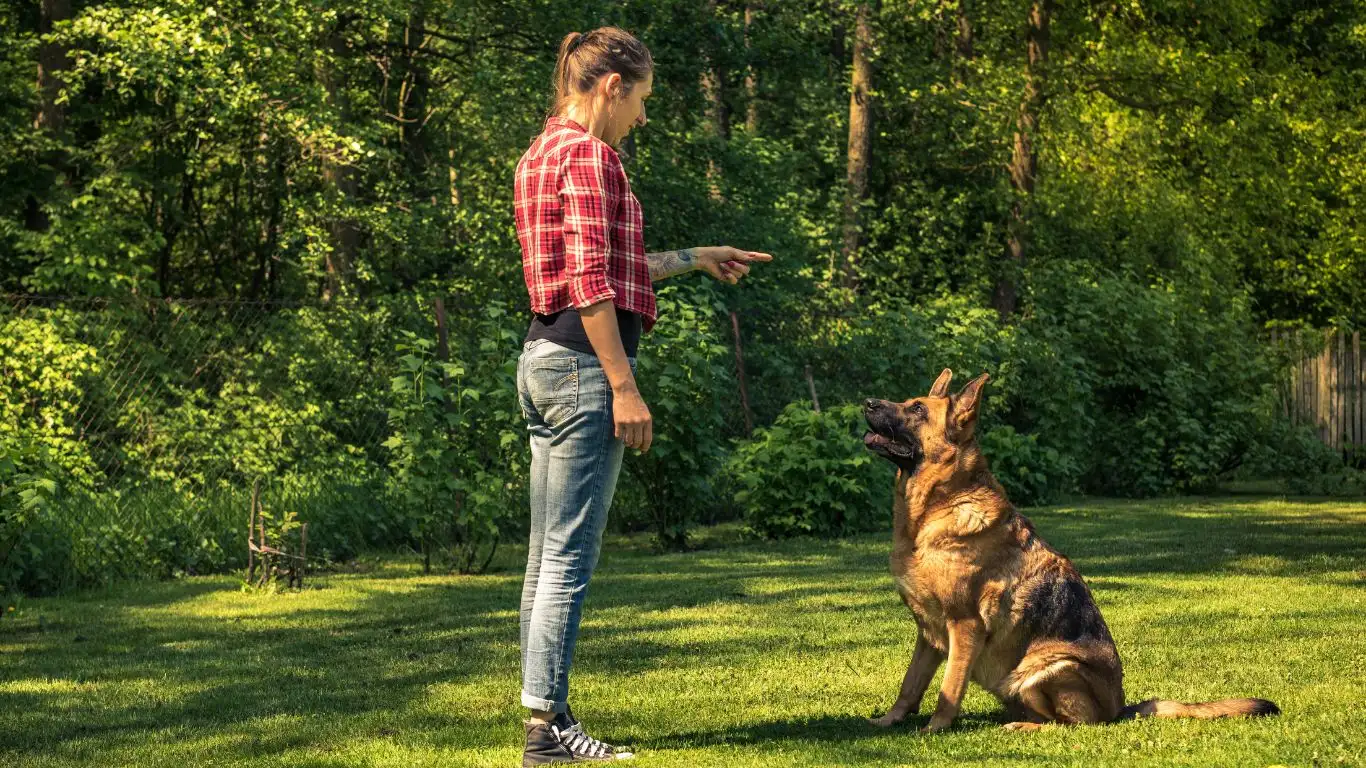
Before diving into training methods, it’s important to understand your dog’s perspective. Dogs are creatures of habit, and any sudden change in their environment can be overwhelming for them. Imagine being in your home, comfortable in your daily routine, and then suddenly, there’s a new, small, unpredictable human being making strange noises and movements. That can be a lot for a dog to process, especially if they’ve never been exposed to babies before.
Dogs may initially react with curiosity, anxiety, or even territorial behavior. They might be unsure about how to interact with a baby, especially if the baby is loud, moving quickly, or grabbing at things. This is why early preparation and training are key to ensuring both your dog and your baby are comfortable and safe together.
Step 1: Introduce the Baby’s Scent Gradually
One of the first things I recommend to my clients is to start introducing the baby’s scent to the dog before the baby even arrives home. Scent is one of a dog’s strongest senses, and getting your dog familiar with the baby’s smell can help reduce their anxiety when they first meet.
Here’s a simple way to do it:
- Before the baby arrives, ask a family member or friend to bring an item that smells like the baby (like a blanket or clothing the baby has worn).
- Allow your dog to sniff the item, giving them time to explore and become familiar with the scent.
- Observe how your dog reacts. If they seem calm, reward them with praise or a treat. If they seem nervous or unsure, try short and positive scent exposures, increasing the time gradually.
This process gives your dog a head start in getting used to the new smells in your home. You might be surprised at how much this simple step can help ease your dog into the idea of a baby being around. Once your dog is comfortable with the scent, you’re one step closer to introducing them to the baby themselves.
Step 2: Create a Safe Space for Your Dog
When bringing a new baby into your home, it’s essential to remember that your dog still needs their own space. This space serves as a retreat for them—a place where they can go to relax and avoid feeling overwhelmed. Whether it’s their crate, a designated room, or a comfy corner, make sure your dog has access to a safe space where they can unwind without interruption.
I’ve had several clients who didn’t think about this aspect until after the baby arrived, and it made the transition much more stressful for the dog. Without a personal space to retreat to, dogs can feel trapped or stressed when they’re suddenly surrounded by constant noise and activity. A safe space can provide them with the comfort they need during this time of change.
Step 3: Control the Initial Meeting
One of the most crucial parts of training a dog to be comfortable around babies is the first meeting. This can set the tone for the entire relationship. You’ll want to control this initial interaction to make sure it goes smoothly. Here’s how:
- Keep the baby in someone else’s arms when you introduce them to the dog. This keeps things calm and controlled.
- Use a calm, reassuring voice to greet the dog and keep their attention focused on you rather than the baby. It’s essential not to overwhelm them with too much excitement or new stimuli at once.
- Give your dog plenty of time to sniff and observe the baby from a distance. If your dog shows signs of fear or anxiety, back off and try again later. Never force the interaction.
- Use positive reinforcement (like treats and praise) to reward calm behavior.
Remember, the first meeting should be brief and low-stress for both your dog and the baby. You can gradually increase the time they spend together as your dog becomes more comfortable with the baby’s presence.
Building Positive Associations

Once your dog has met the baby and is starting to get comfortable with their presence, it’s time to build positive associations. This is an essential part of the process because your dog needs to associate the baby with good things, not just overwhelming or stressful situations. Positive reinforcement is your best friend here.
Start by associating the baby’s presence with something your dog loves, like treats or playtime. For example, when the baby is nearby and the dog remains calm, reward them with a treat. If the dog is interacting with the baby (in a safe manner, of course), offer praise and a tasty reward. This helps your dog understand that the baby’s presence leads to positive outcomes, reinforcing calm and friendly behavior.
Step 4: Gradual Desensitization to Baby Sounds
Before the baby arrives, you can start desensitizing your dog to the types of noises babies make. Baby cries, coos, and giggles can be very jarring to a dog if they’re not used to them. You can help your dog become desensitized by playing recordings of baby noises at a low volume. Start with a sound that’s quiet and gradually increase the volume as your dog becomes more comfortable with it.
During these sessions, remember to reward calm behavior. This method helps the dog become more familiar with the sounds and associate them with positive experiences.
Step 5: Monitor and Manage Interactions
As your baby grows and becomes more mobile, their interactions with the dog will naturally increase. This is where your job as a pet owner and trainer becomes even more critical. Always supervise interactions between your dog and your baby to ensure everyone stays safe. Never leave your baby and dog alone together, even if your dog seems to be friendly and calm. Babies can be unpredictable, and dogs may feel threatened or overwhelmed without warning.
By continuously monitoring and managing these interactions, you can help maintain a peaceful coexistence between your dog and your baby as they both grow and learn together.
Ensuring Continued Comfort for Your Dog and Baby
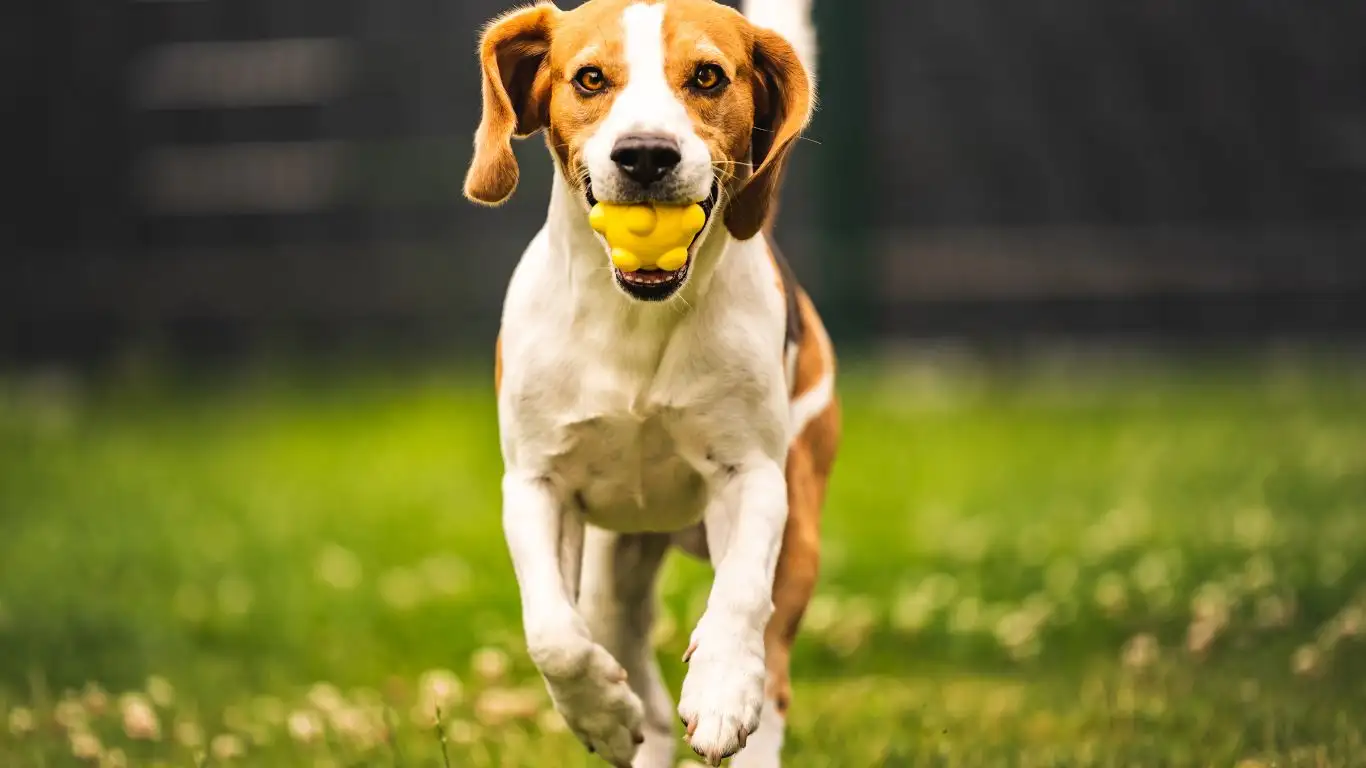
As your baby grows, their presence in the household becomes more engaging. They start to crawl, move around, and make louder, more frequent noises. This is where the real challenge of integrating your dog and baby comes into play. It’s important to continue working on your dog’s comfort level as your baby’s behaviors evolve. What worked during the early days might need to be adjusted as your baby grows more active.
In my experience, maintaining a calm, structured environment is key for both your dog and baby. Keeping routines intact for your dog—like regular walks, feeding times, and play sessions—helps to reduce stress. A dog that feels stable and secure in their routine is far less likely to show signs of anxiety or frustration around a new baby. So, don’t neglect their needs even when you’re juggling the demands of a newborn!
Step 6: Teach Your Dog to Respect Boundaries
It’s critical to teach your dog boundaries when it comes to interacting with the baby. This doesn’t mean punishing your dog for curiosity or excitement, but instead, guiding them to understand that there are times when they should keep their distance. Teaching boundaries early helps prevent future problems, especially as your baby becomes more mobile and begins to explore the world.
One method I often recommend to my clients is to train their dog to respect the baby’s personal space. Start by establishing areas in the house where the dog is not allowed to go without supervision, like the baby’s play area or crib. Use positive reinforcement to reward your dog when they respect these boundaries. It can be as simple as teaching your dog to stay out of certain rooms when the baby is in them.
- Use commands like “stay” or “leave it” to teach your dog to avoid areas where the baby might be.
- When your dog successfully avoids an area or respects a boundary, reward them with praise or treats.
- Consistency is key—every time your dog listens and follows the boundaries, offer positive reinforcement.
As your baby gets older, they will start to explore their surroundings and will likely show interest in the dog. This can create moments where your baby and dog might not be sure how to interact with each other. It’s essential to model appropriate behavior for both the baby and the dog to ensure peaceful and safe interactions.
Step 7: Redirect Unwanted Behavior
Even after your dog gets used to the baby’s presence, there will be moments where they might act out due to overstimulation, curiosity, or even jealousy. In these cases, it’s important to redirect your dog’s attention to something more positive. I always tell my clients to be proactive about preventing these behaviors before they escalate.
If your dog begins to act too excited or is showing signs of anxiety, use redirection techniques like offering a toy or engaging them in a short training session. If the dog jumps up to greet the baby or becomes overly interested in them, calmly guide them away and offer an alternative, like a chew toy or a comfortable resting spot.
- If your dog tries to get too close to the baby, say “no” firmly and redirect them to a designated area.
- Give them something positive to focus on, such as a favorite toy or treat.
- Repeat the redirection calmly until your dog learns that the baby’s space is off-limits at certain times.
Redirecting unwanted behavior not only prevents potential issues but also helps your dog understand what is expected of them when the baby is around. The goal is to avoid punitive measures, which can increase anxiety and confusion, and instead focus on teaching positive behaviors through guidance and reward.
Managing Your Dog’s Energy Levels
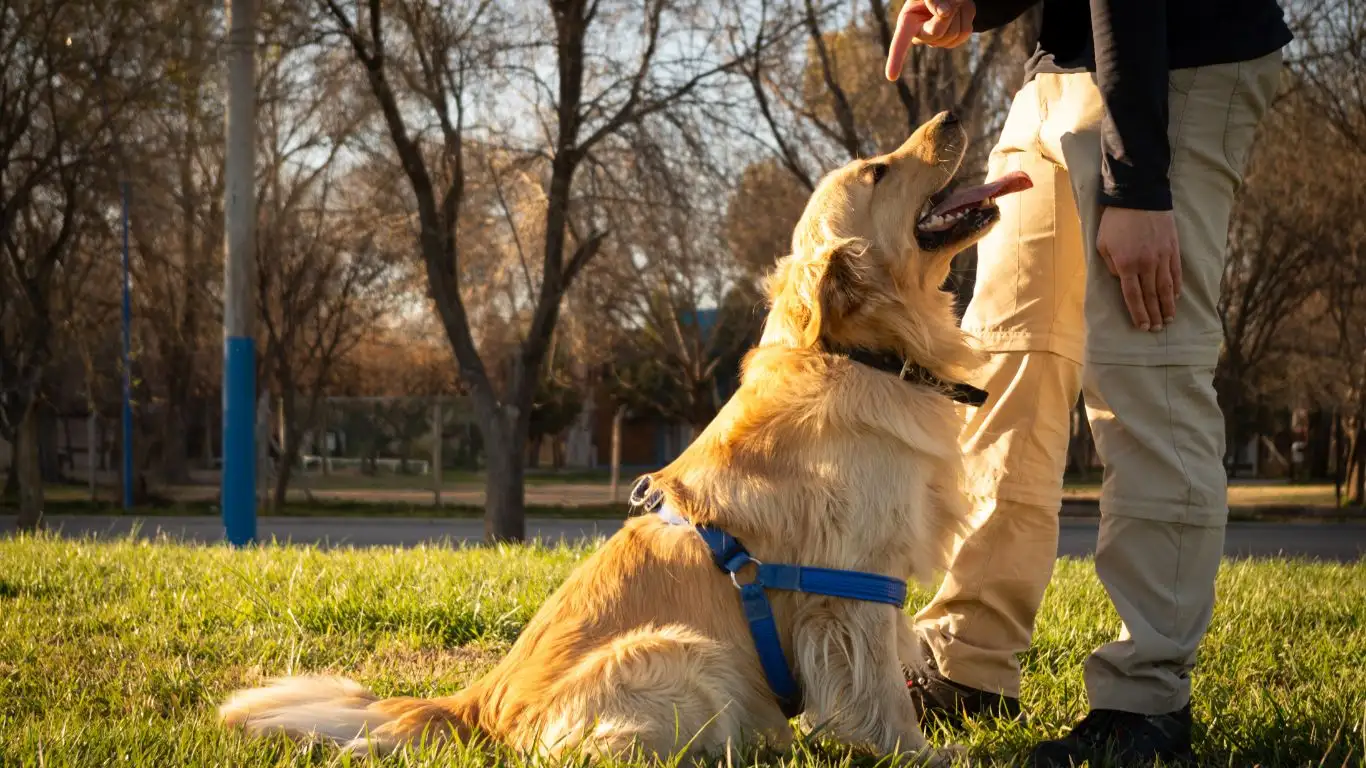
Dogs, particularly high-energy breeds, can become more reactive when they have excess energy. This can be especially challenging when trying to train your dog to be comfortable around a baby. I’ve worked with many pet owners who faced this issue, and one thing is clear: an under-exercised dog is more likely to exhibit anxious behaviors or unwanted actions when introduced to new experiences, like a baby.
Ensuring that your dog gets enough physical exercise and mental stimulation is crucial. If your dog is calm and content before a baby interaction, they’re less likely to be overstimulated or anxious around the baby. Regular walks, playtime, and training sessions all contribute to a well-behaved dog who is more likely to react calmly to the baby.
Take a look at some of the ways you can burn off your dog’s energy to keep things smooth:
- Daily walks or jogs: Ensure your dog gets enough physical activity each day. A tired dog is a happy dog, and they will be less likely to exhibit hyperactive behavior around the baby.
- Mental stimulation: Puzzle toys, scent games, and interactive training exercises can help tire out your dog’s brain. A mentally stimulated dog is just as content as one that’s physically exercised.
- Interactive play: Playing fetch, tug-of-war, or other active games will help channel your dog’s energy in positive ways.
If you notice your dog getting restless or overly excited when the baby is around, try to provide them with an outlet for that energy before bringing them into the baby’s space. Ensuring your dog is calm and well-exercised will help them stay relaxed and composed when they’re around the little one.
Building Trust Between Your Dog and Baby
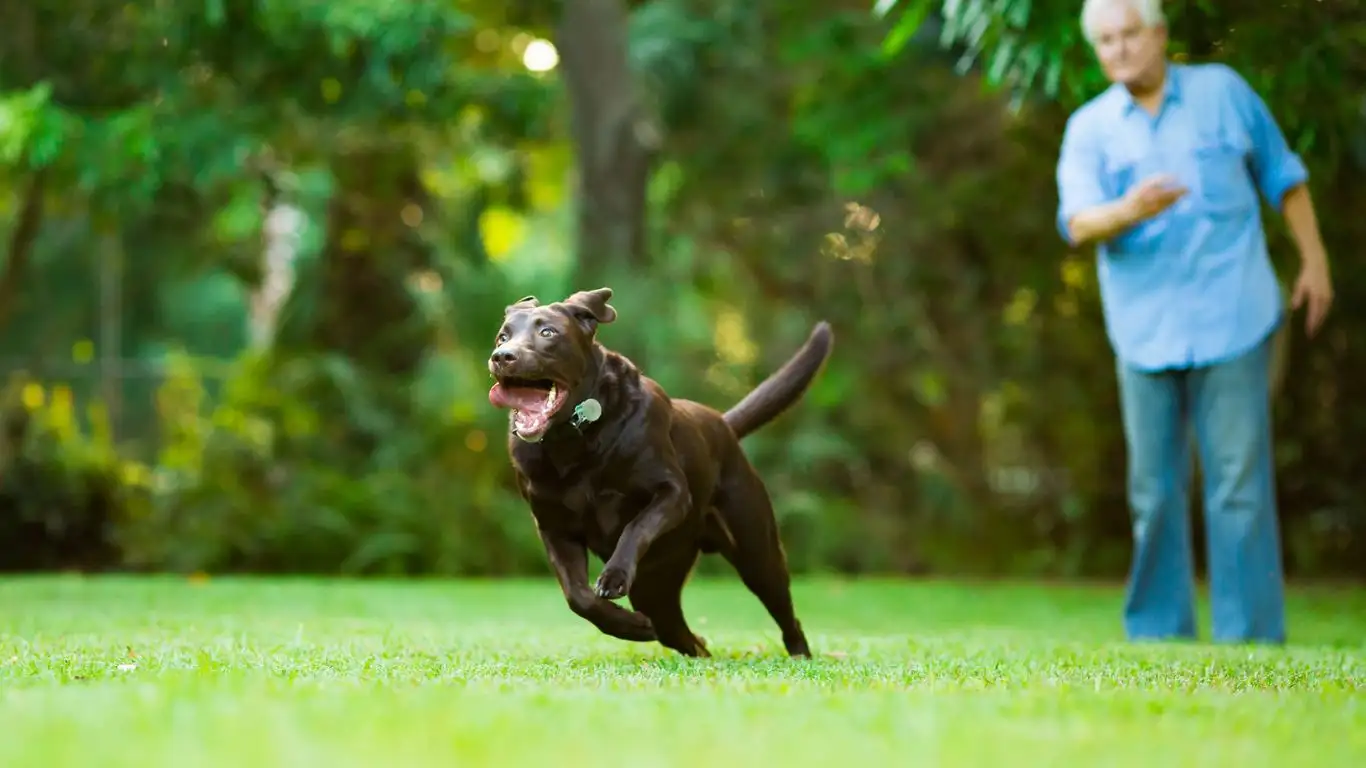
One of the most important factors in ensuring your dog is comfortable around babies is building trust over time. This goes for both your dog and the baby. Dogs, especially those that have never been around children, need time to adjust and get to know the baby as a member of the family. The same goes for babies—while they can’t communicate directly with the dog, they can learn how to approach and interact with pets safely as they grow.
In my years as a trainer, I’ve seen how trust between dogs and babies can develop naturally when they are given time and positive experiences together. Here are some steps to foster trust:
- Gradually increase time spent with the baby as both the dog and baby grow more comfortable.
- Model calm behavior for the baby by interacting with the dog gently, showing them how to approach and pet the dog appropriately.
- Reinforce positive behaviors in your dog with rewards when they remain calm and friendly around the baby.
Trust takes time, but when it’s built in a calm, positive environment, it strengthens the bond between your dog and your baby. With patience, persistence, and lots of love, you’ll soon see a loving and peaceful relationship between your dog and the newest addition to your family.
Monitoring Your Dog’s Behavior as the Baby Grows

As your baby becomes a toddler, the dynamic between your dog and baby will continue to evolve. This is a critical stage for both parties, as toddlers become more mobile, vocal, and curious. It’s important to closely monitor your dog’s behavior during these formative years, as this is when the dog-baby relationship can be tested in new ways.
During this phase, your toddler will likely start exploring their environment more independently, which means they’ll naturally start interacting more with the dog. While this can be a wonderful bonding experience, it can also lead to challenges. Your toddler may grab the dog’s fur, tail, or ears, which might cause discomfort for the dog, especially if they haven’t been properly desensitized to these types of interactions.
Step 8: Continue to Supervise Interactions
Supervision is key to ensuring that interactions between your dog and toddler remain safe and positive. In my experience, toddlers can be unpredictable, and even the most well-behaved dogs may react in ways you didn’t expect if they feel startled or threatened. At this stage, your dog may have become comfortable with the baby, but toddlers are another story.
It’s essential to continue supervision, especially as your child’s behavior becomes more independent and active. Never leave your dog and toddler together unsupervised, no matter how well they’ve gotten along in the past. Children are naturally curious and may engage with the dog in ways that could inadvertently stress them out. Always keep a watchful eye during their interactions and intervene if necessary to guide them toward safe and positive behavior.
- Set clear boundaries with your toddler about how to approach the dog—gentle touching, no pulling on the tail, ears, or fur.
- Teach your child how to respect the dog’s space, including their bed or crate, so the dog has an area to retreat to when needed.
- Reinforce calm and respectful behavior in both the dog and your toddler by praising them when they interact well together.
Having this ongoing supervision and guidance will help prevent accidents and maintain a positive relationship as both your dog and child grow and change.
Step 9: Reinforce Good Behavior in Your Dog
As your dog and toddler interact more, you’ll want to continue reinforcing good behavior in your dog. The more your dog associates the baby with positive experiences, the smoother their relationship will be. Positive reinforcement plays a major role in this process. By rewarding your dog when they remain calm and gentle, you’re reinforcing the behaviors you want to see.
For instance, if your dog sits calmly while your toddler pet them, reward them with praise and a treat. If they’re interacting in a gentle manner, make sure to acknowledge it. By doing this consistently, you help the dog understand that calm behavior around the toddler is rewarded, which encourages them to repeat it in the future.
Additionally, continue practicing basic obedience skills like “sit,” “stay,” and “leave it” with your dog. These commands are helpful when it comes to managing interactions with your child. If your dog becomes too excited or starts to jump up when your toddler is nearby, you can use these commands to regain control and prevent any unwanted behavior.
Ensuring Your Dog’s Safety and Comfort Around Toddlers
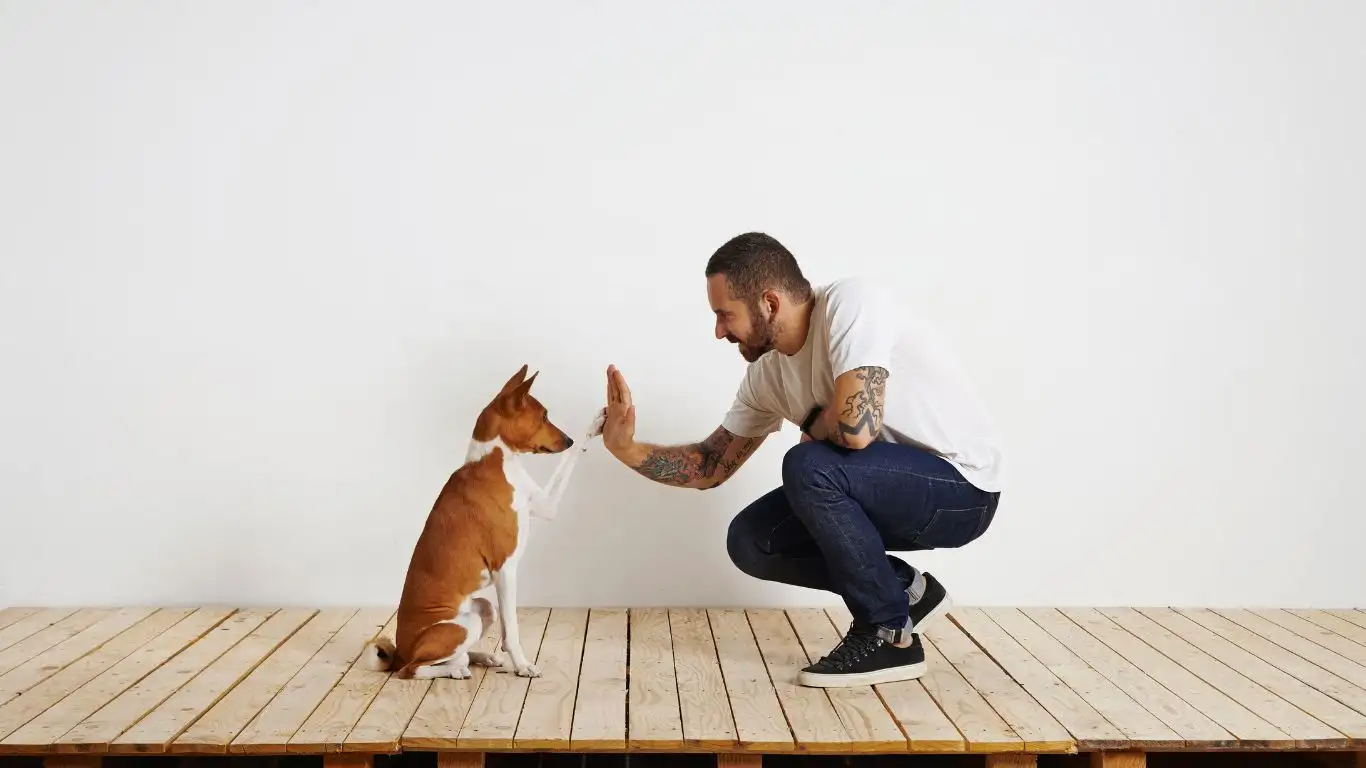
As toddlers explore their world, it’s important to remember that their lack of understanding about personal space can sometimes lead to mishaps. Dogs are generally very patient, but they have limits. It’s important to ensure your dog has a safe space they can retreat to when things become overwhelming. This can be a crate, a separate room, or even a designated corner of the house where your dog can have some quiet time away from the toddler’s hustle and bustle.
I’ve worked with many families who didn’t realize how important it is to give their dog a break from the constant noise and activity of a toddler. Without a retreat, even the most well-adjusted dog can start to feel stressed, which could lead to negative behavior or even a bite in extreme cases. By providing a sanctuary for your dog, you’re helping them manage their stress and creating a safer environment for both your dog and your toddler.
Step 10: Manage Overstimulation and Stress
Dogs can become overstimulated, especially when surrounded by the high energy of a toddler. If you notice signs of stress in your dog, such as panting, growling, or attempting to retreat, it’s crucial to intervene immediately. Overstimulation can lead to anxiety or aggression, which is why recognizing these signs early is essential. By keeping an eye on your dog’s body language, you can prevent issues before they escalate.
Some signs that your dog may be overstimulated include:
- Pacing or restlessness
- Excessive barking
- Showing the whites of their eyes (whale-eye)
- Tail held stiff or tucked
- Avoiding eye contact or retreating
If you notice any of these signs, calmly remove your dog from the situation and give them a break in their safe space. It’s also important to ensure your toddler knows when to give the dog space—teaching your child to recognize when the dog is uncomfortable can help prevent negative interactions.
Teaching Your Toddler About Safe Interactions with Dogs
While it’s important to train your dog, it’s just as crucial to teach your toddler how to safely interact with your dog. The sooner you begin teaching your child to respect your dog’s space and understand appropriate behavior, the smoother the relationship between the two will be. Toddlers are naturally curious, and they may not immediately understand that dogs need their personal space or that certain behaviors (like grabbing or hitting) can be painful for the dog.
Some simple rules to teach your toddler include:
- Only pet the dog gently on their back or sides (no grabbing the ears or tail).
- Never disturb the dog when they’re eating, sleeping, or in their safe space.
- Teach your toddler to ask an adult before trying to pet the dog or interact with them.
- Always supervise any interaction between the dog and toddler.
It’s essential to be patient during this stage, as toddlers are still learning how to regulate their emotions and behavior. With your guidance, they can learn to form a positive and respectful relationship with your dog that will last for years to come.
References
For more information on dog training and behavior, visit PawPatron. Our website offers a variety of resources, from dog behavior tips to professional training programs.
Disclaimer
The advice and tips provided in this article are based on my experience as a Certified Professional Dog Trainer (CPDT-KA). Each dog is unique, and results may vary depending on breed, age, and temperament. Always consult with a certified professional dog trainer if you encounter behavioral challenges with your pet. The information provided is intended to be a helpful guide, but does not replace personalized training or medical advice for your dog.


